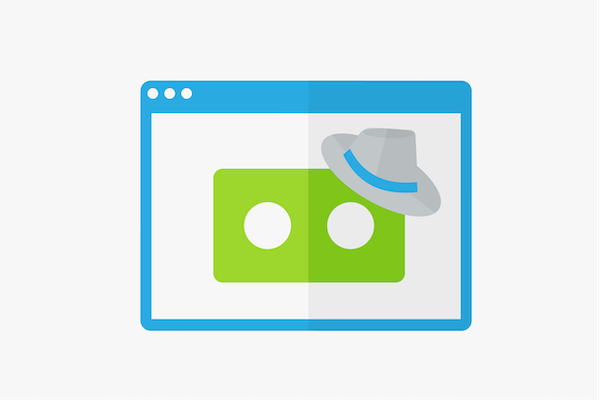Cloaking
Cloaking is a search engine optimization technique in which the content presented to the search engine bot is different from that presented to website users.
General information
If a user surfs the web and accesses a particular website, he will be shown certain files under the URL he entered. But often a page will be accessed through a search engine, which outputs the contents of the website from an index. This index is formed by the Googlebot, also called crawler, which reads the file, tags and stores it in the index. When a user now clicks on a page in the search results, he wants to get the same content displayed, which is otherwise available when accessing the page directly. With cloaking this is not the case, however.
The user may even see the same content, but the search engines or crawlers do not. This type of cloaking is called user-agent cloaking. But cloaking can also be dependent on the IP address. Regardless, cloaking is a violation of the Google quality guidelines and those of other search engines such as Yahoo or Bing.
Use of this technology is prohibited on a webpage, since content is faked. This can be perceived by users as user-unfriendly or as an attempt at deception when the files at a URL are different than what is displayed in the search results, according to Google. Cloaking is related to doorway pages, which act as forwarders, although they initially show other content.
Use of cloaking
Cloaking is a controversial technique. Whereas Google perceives this technology as user-unfriendly and penalizes websites that use it, there are also cloaking advocates who argue that cloaking is necessary to protect the meta data of a page.[1]
Moreover, cloaking must be clearly separated from the legitimate representation of certain files. The presentation of mobile websites is often confused with cloaking. A mobile user agent (Googlebot mobile) is used to crawl a mobile website. If it is detected, a compact webpage version for optimal viewing on a mobile device like the iPhone or Android can be downloaded from the server. Mobile websites do not fall under the category of cloaking, since it is a mobile user agent who visits the website, and not to the Googlebot.
Google welcomes mobile adaptations, since the compact display is more user-friendly than the regular web version, and does not consider this cloaking. Any redirects that occur because of geodata are not considered cloaking. In this case, users are shown content, that is of particular interest to them and is related to their location.
Thus, individual scenarios must be distinguished to determine whether user-specific data is displayed because it is particularly relevant to them or whether it is a deliberate attempt to deceive.[2]
Importance for search engine optimization
In search engine optimization, cloaking is considered to be a measure intended to improve the ranking of websites. However, Google deems it a manual intervention to alter ranking. Under certain circumstances, a website that uses cloaking may be removed from the index entirely and will no longer be accessible through search engines. Cloaking is a black hat SEO technique. It is therefore recommended that SEOs abide by the Google webmaster guidelines and present the same content to the Googlebot that is shown to the users.
References
- ↑ Cloaking. webopedia.com. Accessed on 04/22/2014
- ↑ What is Cloaking & Is All Cloaking Evil?. searchenginejournal.com. Accessed on 04/22/ 2014
Web Links

